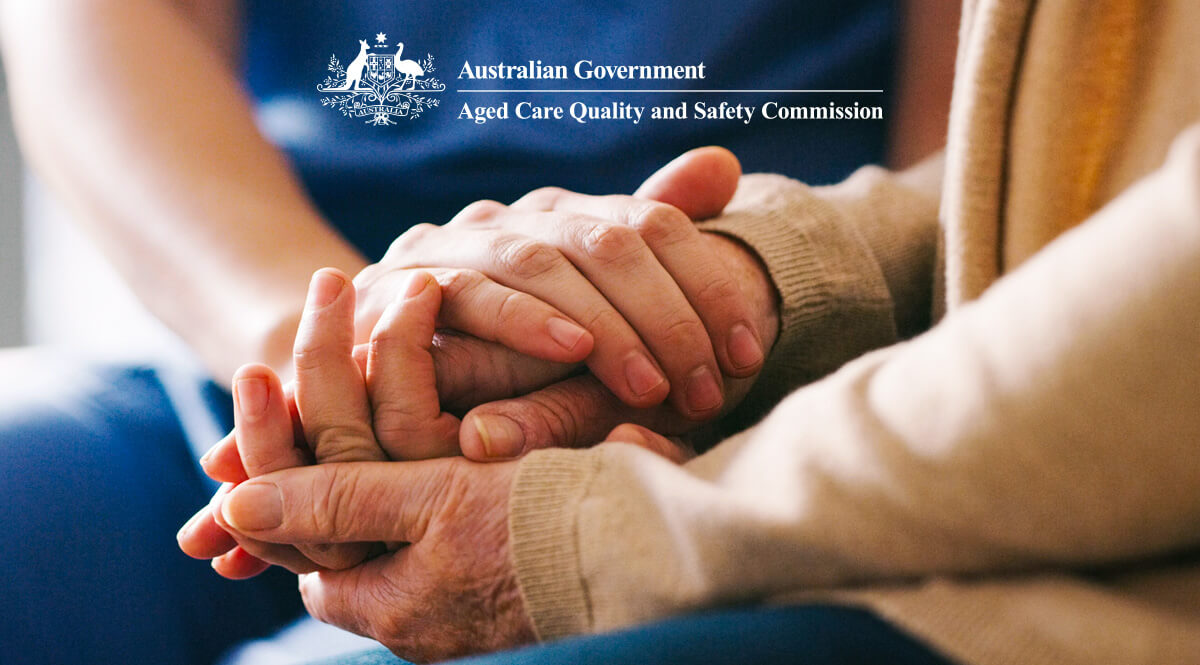The Aged Care Royal Commission in Australia published a new initiative recently, with an aim to support the Australian aged care sector to prepare their self-assessments prior to a government assessor audit.
This new set of auditable requirements has patient care at its very core. The foundations are built on aged care homes providing quality care, treating patients with dignity, ensuring they feel safe, enabling patients to have a choice, and the ability to get specialist treatment & care when needed.
In this blog we take you through the upcoming requirements and explain how the latest GRC technology can provide a simple framework to capture all the information needed to pass the audit.
What are the 8 different standards covered in the self-assessment?
Here we look at the 8 key standards that make up this new framework and detail some of the areas that care homes will have to provide evidence of – and will ultimately be audited against.
- Consumer Dignity & Choice – Aged care facilities will need to provide evidence of how patients are treated with dignity & respect in regard to their identity, culture, and values. They must demonstrate how patients are given a choice regarding their care, lifestyle, and relationships, privacy must be respected, and patients must be supported to take risks to make the most of their lives.
- Ongoing Assessment & Planning with Consumers – To meet the requirements in this standard, aged care facilities will need to demonstrate how they balance care requirements around a patients’ needs, goals & lifestyle preferences – from daily care to end of life wishes.
- Personal Care & Clinical Care – This is to ensure patients receive the right level of personal & clinical care based on their individual requirements & this should be regularly assessed to capture any deterioration or improvements in patient condition.
- Services & Support for Daily Living – To comply with this standard, aged care facilities will need to provide evidence of how patients receive adequate daily support in regards to emotions, food, equipment, and external interactions with other people & establishments.
- Organisation’s Service Environment – To pass this section aged care facilities must rate themselves on both how welcoming & easy to understand the facility is and they must also include details around its cleanliness, safety, and manoeuvrability.
- Feedback & Complaints – This area requires care homes to have a well-defined feedback & complaints procedure that is visible to patients & families. An open disclosure process should be used when things go wrong, and results should be used to improve the quality of care.
- Human Resources – This section is about having the right number of trained staff onsite to ensure quality care. They must be qualified, respectful of each consumer’s identity, culture & diversity, and must undergo regular performance reviews.
- Organisational Governance – This section is to ensure facilities comply with organisational governance relating to safety, inclusivity, information management, continuous improvement, regulations, accountability, and incident & risk management.
Each section has up to 7 different criteria that aged care facilities must provide evidence for. All in all there are 42 different areas that organisations must assess themselves against and include examples of actions & evidence to support. When completing the self-assessment, they must also capture areas for improvements identified along with any planned actions. They must also capture a target action date and rate them selves according to each area – rating options include exceeding, meeting, developing or not applicable. Finally, organisations must also complete a plan for continuous improvement, capturing all the pending improvements identified in the self-assessment, along with the individual responsible and the deadline for completion.
You can view a full breakdown of all the self-assessment requirements here in this form shared by the Aged Care Quality & Safety Commission.
The Challenges of Conducting the Self-Assessment
For most aged care facilities, completing a complex self-assessment like this, requires substantial input from a lot of different teams & departments across multiple sites. Using spreadsheet-based processes to log this kind of data and capture sufficient information is challenging due to the following restrictions:
- Multiple users accessing the same spreadsheet becomes a challenge, and organisation run the risk of work being overwritten or staff being locked out of documents by other users.
- There is no permissions hierarchy – making it difficult to know which staff member added what data and when.
- There is little data governance, meaning information is entered in inconsistent formats & cells are left blank.
- It is challenging to add evidence links to photos, URLs, and documents in Excel.
- Each years’ assessments are done on a different spreadsheet making it hard to compare results year on year.
- Reporting on results is a manual, time-consuming process.
How can organisations automate the self-assessment process?
With the ‘Aged Care Quality Standards Self-Assessment’ becoming a common requirement in aged care facilities, organisations are looking at ways to digitise & automate the process to ensure sufficient evidence is collated in a timely manner. The flexible workflows & registers, and online forms & templates available in the Camms platform make it easy to capture the relevant data from across the organisation & formalise the results.
The Camms platform can be easily configured to set up an online system to create a framework for the self-assessment process and capture the information required. A framework is set up for each of the 42 assessment areas in the system. Each assessment area can be assigned to the relevant team member for completion. The individual responsible for the area will receive notifications when their assessment is due and will be sent chaser emails if they don’t complete it on time. They can log all of the evidence in the system via an online form – with all data feeding directly into the platform. There will be options to upload photos, add URLs & links, and upload supporting evidence documents. They can also log areas for improvements & monitor progress and add target dates to implement the changes. Teams can select their self-assessment rating from a dropdown menu, ensuring consistency.
All results are captured centrally and can be easily reported on by management. No matter how many times you choose to conduct the self-assessment, the history will be captured online – and teams will have a full record of all the previous results and can easily demonstrate progress & continuous improvement. It is also easy to report on any areas that are not resolved – to ensure timely resolution.
Conducting the self-assessment using an online platform, ensures strict data governance, ensuring information is entered consistently & on time, in the required format. The system keeps a log of who entered which data and when, ensuring accountability & ownership. Online forms and personalised dashboards ensure staff only see assessment areas relevant to them – protecting confidential information & ensuring staff don’t see or amend data that is not in their remit. Reporting is also simplified, as management, can easily understand which areas of the assessment were not completed on time and pull reports on poorly rated areas to guide improvement initiatives.
How can software support in other areas to collate evidence for the self-assessment?
We’ve looked at how software can automate the self-assessment process itself by bringing the process online and automating the collection of the data. But software can also support aged care facilities to collect sufficient evidence to comply with some of the standards within the self-assessment.
Feedback & Complaints – The Camms platform enables aged care facilities to set up a formal feedback & complains procedure. Patients, families, and staff can log any feedback or complaints via online forms that feed into a centralised platform. An online portal can be set up enabling patients’ families to complete forms online with all data feeding directly into the tool. Cases can then be triaged and escalated to the relevant member of staff via automated workflows to ensure a timely resolution. Management can easily report on types of feedback & common complaints & put measures in place to resolve them. The reports can also be used as evidence in your self-assessment.
Risk Management – Part of the self-assessment is ensuring patients & staff are not exposed to unnecessary risk. Aged care facilities can set up a best-practice risk management program in the Camms platform. Risks are logged in an online risk register and rated according to their likelihood & severity. Teams can roll out risk assessment forms online with all data feeding into the platform and they can set KPIs & KRIs to monitor risk. Organisations can set up a control library to manage the most critical risks – ensuring a high level of patient care and providing adequate proof for their self-assessment.
Compliance & Policy Management – Organisations can set up an obligations library of all applicable regulations, standards, policies & procedures in the platform – and monitor ongoing compliance with regular checks. Workflows can be set up to manage regulatory change along with any policy changes & updates. This proof of compliance can be used as part of your self-assessment. Teams can also schedule their audits & capture findings and the associated actions.
Incident Management – In a complex, unpredictable environment like aged care facilities, incidents will happen. But it is how those incidents are managed & addressed that-matters. The Camms platform can help organisations to set up a best practice incident management process. Incidents are logged via online forms that feed straight into the tool. Workflows ensure incident cases are properly escalated and worked through to resolution. Teams can easily report on incidents & put measures in place to prevent them from reoccurring.
If you are working in aged care and are struggling with manual processes, spreadsheets, and paper forms, and would like to digitise & automate your processes, software can help. From bringing your risk & compliance processes online to offering an online portal to capture incidents, feedback & complaints, software can provide a framework to simplify any process and bring it online.
Whether you are struggling to complete the self-assessment itself or would like to automate the capture of evidence to support your submission, Camms can help. Reach out to us for a demo. Find out more about how the Camms GRC platform can support aged care organisations, care homes, and nursing facilities here or request a demo.





